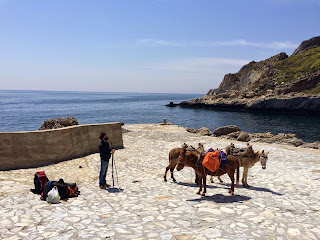I recently had the chance to go down to Athens for a fascinating conference on Digital Media and Orthodox Pastoral Care, which basically examined if and how the Orthodox Church should use the new digital media.
On evening I was there, the organizers (mainly Pemptousia) took us out to dinner along the seaside. It was a chance for me to visit with my fellow American, Fr. Patrick O'Grady (right), as well as Prof. Jean-Claude Larchet (left).
The next morning, I attended a seminar put on by the Volos Academy for Theological Studies. Thanks to the Farah Foundation, an Orthodox philanthropical institute, the Volos Academy puts on an annual lecture and seminar series. This year's speaker was Prof. Richard Swinburne, who is most famous as being the counterpart to New Atheism's Richard Dawkins in the public debate about the existence of God. Swinburne, a convert to Orthodoxy, spoke in Athens and Volos on the existence of God and the problem of evil (theodicy). I was fortunate to be able to host him in Portaria and we had a lovely conversation for several hours as we walked from Portaria to Makrinitsa.
Swinburne's visit to Greece came as a counterpoint to the recent visit of Richard Dawkins, who spoke in Athens at the presentation of the translation of one of his books into Greek.
























































